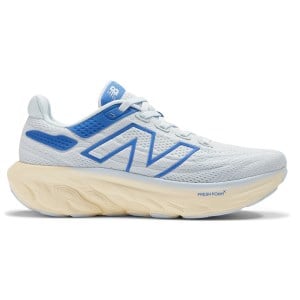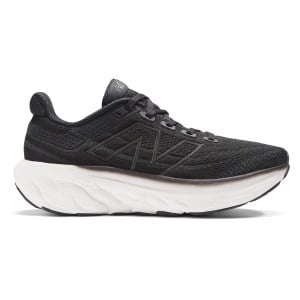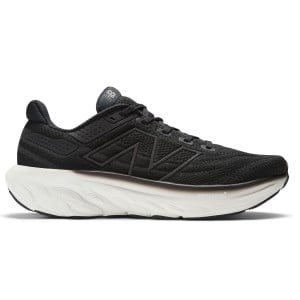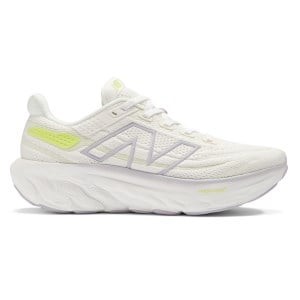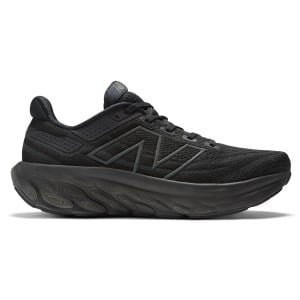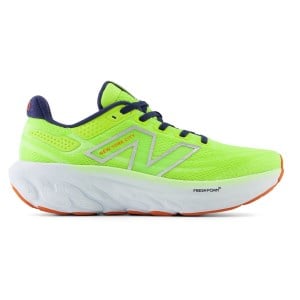New Balance Fresh Foam X 1080v13 vs v12 Comparison Running Shoe Review
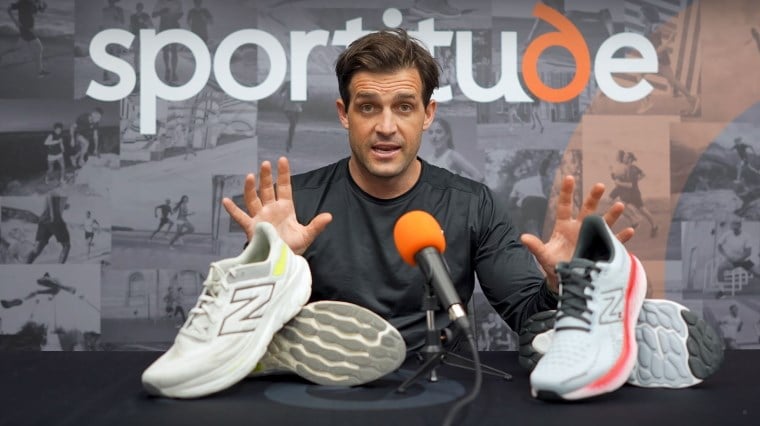
The main difference between the New Balance Fresh Foam X 1080v13 and the New Balance Fresh Foam X 1080v12 is its plusher feel thanks to an upgraded Fresh Foam X midsole that works in harmony with the higher stack height.
In fact, this latest edition to the New Balance 1080v13 franchise is the lightest and softest of the series yet. As Sportitude running shoe expert Josh Willoughby explains;
"If you're looking to fulfil that long run, recovery run and easy days out on the road, switch off and just tick the legs over, the New Balance 1080v13 is going to do exactly that."
It fills a gap your shoe rotation, with a focus on comfort first and foremost. From the ground up, it allows you to flow into your ideal running rhythm, free of distractions.
A foot-hugging engineered mesh upper features recycled materials for an eco-friendly edge, while the vertical flex grooves of the outsole ensure a consistently smooth ride, no matter how you strike the pavement.
-
New Balance Fresh Foam X 1080v13 - Womens Running Shoes
-
New Balance Fresh Foam X 1080v13 - Womens Running Shoes
Check out the review with full transcript below.
Hey guys, Josh here from Sportitude. It's shoe review time and we're going to be comparing the New Balance Fresh Foam X 1080v13 with the New Balance Fresh Foam X 1080v12.
There’s big changes from the New Balance running family. They've put in a lot of time and effort into executing their lightest and softest New Balance 1080 running shoes to date, and in today's review we're going to talk about all the significant changes from the outsole, the midsole and the upper, and also profile the foot type or the runner that should be considering this shoe.
Like we always do, we'll get into the details and we look forward to giving you all the information that you need to maybe make the New Balance 1080v13 or New Balance 1080v12 your next running shoe purchase. Without further ado, let's get stuck in.
Foot Type
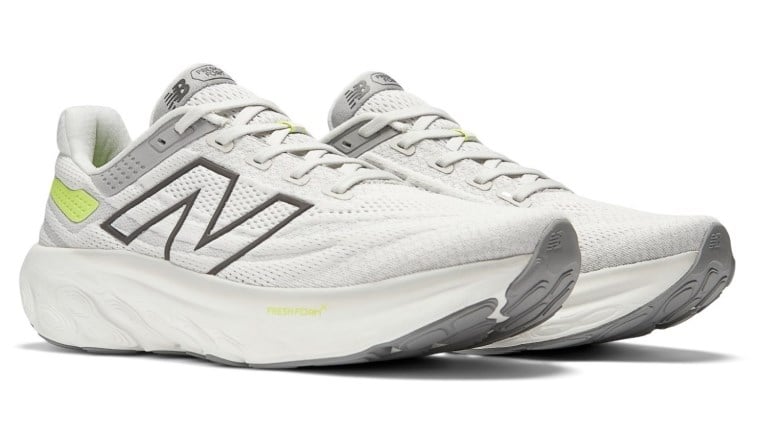
The New Balance 1080 franchise has always targeted that neutral runner, the runner that doesn't have a reliance on any medial structural support on the instep. It is someone that happens to have a smoother transition through their entire gait cycle, so in technical terms they don't overpronate.
If you do overpronate or you are looking for extra support, the New Balance Fresh Foam X Vongo v5 or New Balance Fresh Foam X Vongo v6 would be a running shoe that you should consider.
With foot type in mind, we also like to profile what the midsole is going to do for a runner. The New Balance 1080v13 is a high mileage shoe and it is a soft shoe underneath the foot. I’m not saying it’s dissimilar to the New Balance 1080v12 because they're pitched to the same person.
However, the New Balance 1080v13 is significantly softer compared to the New Balance 1080v12. It’s for someone that's searching for a lot of cushioning underneath their body looking for maybe the second or third shoe in their shoe rotation for those easy days or recovery days.
The New Balance 1080v13 wouldn't be a great shoe for someone who's going to be looking for the one shoe to do it all and is potentially running four or more times a week. It will wear out too quickly because this midsole needs time to recover after a workout.
Upper
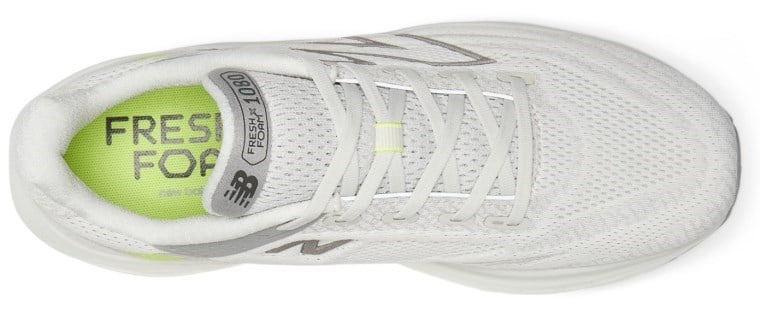
Let's talk about the upper first because New Balance have put in a significant effort regarding their sustainability message in the New Balance Fresh Foam X 1080v13. They've sourced plastic waste, they clean it then create the resin to then form the fibre which they use in this engineered Hypoknit construction.
Last year we had Hypoknit with the New Balance Fresh Foam X 1080v12 as well, so technically speaking on paper it would look the same and feel the same, but it doesn't. Like all iterations from one season to the next with most brands, you'll see some form of change.
New Balance have tightened the weave in the New Balance 1080v13 engineered upper to make this running shoe a little bit more structured up top. I believe that's more due to the fact that they've made some changes with their midsole technology.
They've had to make the upper of this running shoe a little bit more structured. You’ll find a couple of significant changes. The laces come further down towards the forefoot in comparison to what we had last year with the New Balance 1080v12 and the saddle fit and feel which is that gusseted tongue construction across the arch is a little bit more conformed with the New Balance 1080v13 in comparison to what we had last year with the New Balance 1080v12.
That's saying a bit because I actually liked how the saddle fits and felt for me personally in the New Balance 1080v12, but they've executed it a little bit nicer in regards to the New Balance 1080v13.
The other noticeable change for me was the amount of foam on the internal heel collar. There was a little bit more padding in the New Balance 1080v13 which is a good thing because it does take away that noticeable feel with the heel counter construction.
If you go back to the New Balance Fresh Foam 1080v11, New Balance had a bit of a tough time executing that heel counter. They had some issue with regards to how it fit, how it felt and obviously the overall performance.
They did address that and made significant improvements with the New Balance 1080v12, but then 12 months later they've made even more improvements with the New Balance 1080v13 which is absolutely fantastic.
Outsole
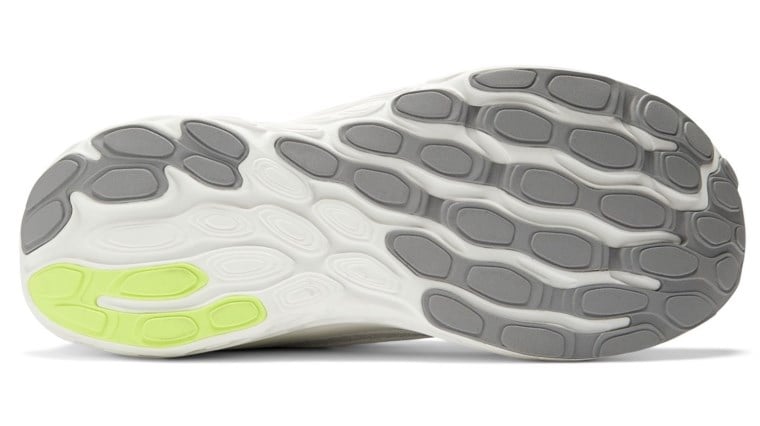
For now, I'm going to skip the midsole because there's a lot to talk about with the outsole construction and configuration and that would be a great segue to the midsole part of this review.
Let's flip the running shoes upside-down and have a look underneath. First things first, there's not much difference regarding the overall surface area. The New Balance Fresh Foam X 1080v12 ever so slightly has more coverage, but not significantly where it's going to change the overall performance of the shoe.
New Balance made the New Balance Fresh Foam X 1080v13 a little bit wider, due to the density of Fresh Foam X cushioning system and the positioning of the flex grooves.
The noticeable change is not only the surface area, but the outsole placement with both running shoes. In the New Balance 1080v12, we have that vertical line which runs on the outside of the midsole with two flex grooves through the forefoot which run horizontally from the medial side through to that vertical line on the lateral side of that forefoot.
Also, it's really important to point out that the New Balance 1080v12 had a very durable rubber in the back half in a horseshoe shape. It was a really thick abrasive rubber, and the forefoot through the front half of this shoe is a little bit thicker than in the New Balance 1080v13.
Looking at the New Balance 1080v13, the change in flex groove positioning has complemented what they've done with this midsole. The flex grooves run in vertically, almost diagonally, from the lateral side to the medial side in that positioning through the mid to the forefoot. That promotes a smoother rocker feel as you release out of your gait cycle, but it's also going to provide a more smoother consistent wear pattern across the entire midsole.
We have the durable rubber in the back half which has been strategically placed for heel strikers which is very important. However, it doesn't matter if you strike in your midfoot, forefoot or obviously your heel, you're going to get a really consistent purchase with the ground and overall transition with this outsole placement.
I really like what New Balance have done with this outsole configuration. By switching it up instead of having those horizontal flex grooves from the medial to the lateral side, you're actually running with the outsole, not across those flex grooves. I personally found the New Balance 1080v13 to be an easy running shoe to break in, in comparison to the New Balance 1080v12.
I did like the New Balance 1080v12 and I thought it was an easy shoe to run in. However, in a couple of runs you had to press into that midsole to get that relationship with that forefoot rocker, which is OK, that's part of the parcel with running shoes.
However, the New Balance 1080v13 felt absolutely fantastic straight out the box in that first run. The rocker was where I needed it to be and it felt very smooth through the release of that forefoot.
Midsole
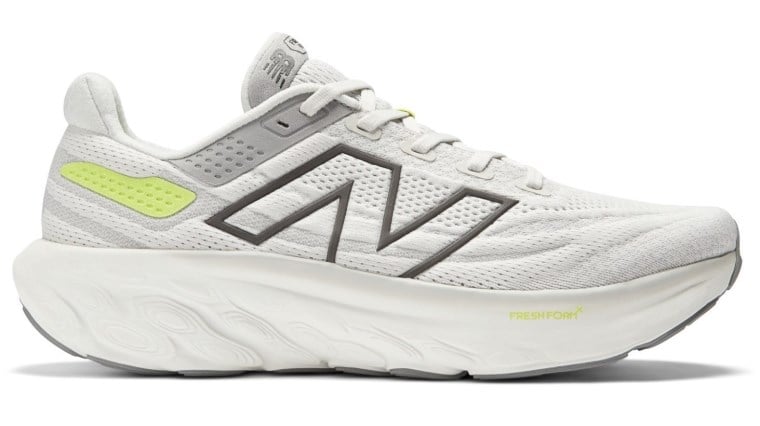
Let's talk all things midsole. On paper we still have the Fresh Foam X cushioning system, however in the New Balance Fresh Foam X 1080v13 in comparison to the New Balance Fresh Foam X 1080v12, the former is significantly softer. The density of foam is softer and the overall ride is softer.
With their midsole execution, New Balance have changed a significant engineering feature. We've gone 1mm higher in stack height. The New Balance 1080v13 is 33mm in the heel and 27mm in the forefoot for that offset of 6mm.
Last year the New Balance 1080v12 had 32mm in the heel and 24mm in the forefoot for that variance of 8mm. They've dropped the heel-to-toe pitch by 2mm, but increased the overall stack height by 1mm.
We get told these numbers by New Balance which is a fantastic thing. However, they are an approximate so while there are minor changes in the manufacturing process, every single New Balance 1080, be it the 1080v12 or 1080v13, isn't made in the same factory. They're made in different factories and sometimes they can be made in different countries.
We don't know for sure just yet with the New Balance 1080v13, but there are subtle discrepancies with the heel-to-toe drop, and not only that, from a size 7 right through to size 15. We take that with a grain of salt but it does feel like a 6mm heel-to-toe offset in comparison to last year's 8mm.
Being on a higher stack height is a really important thing because by making the midsole softer, if you had it on the same stack height as last year it's going to compress even more and you're going to find it to wear a little bit quicker. New Balance had to take it a little bit higher off the ground and that's what I touched on in the intro.
New Balance have taken their learnings from their New Balance 1080 franchise years gone by, but they've also taken some learnings from their New Balance Fresh Foam More franchise which is a 4mm offset.
They've met it halfway using a higher stack. Meeting that heel-to-toe drop halfway with a 6mm offset you're complimenting what New Balance know and of love with the New Balance More franchise and what they know and expect from their New Balance 1080 franchise to execute the New Balance 1080v13, their softest and lightest 1080 to date.
Similar Running Shoes To The New Balance Fresh Foam X 1080v13

Now too give you some context if you haven't been a New Balance 1080 wearer or runner previously. If you've used the Asics Gel Nimbus franchise in the last couple of seasons, particularly the Asics Nimbus 25 (above) I would certainly consider looking at the New Balance 1080v13. You’re likely to enjoy a slightly high stack and a softer ride underneath the body.
If you're coming from the Hoka Clifton franchise, that's probably a more familiar fit ride to the New Balance 1080 family than the Asics Gel Nimbus, but both would certainly be an easy transition into this New Balance 1080v13.
I found the Hoka Clifton to be a lovely shoe underneath the foot, but they do take a little bit to wear in. What I found with the Hoka Clifton is after that around 100km, they soften right up. That is how the New Balance 1080v13 felt straight out the box. The New Balance 1080v13 doesn't necessarily need any breaking in to get that compression on the midsole. It's very soft from the get-go.
As I have briefly hinted at, the New Balance 1080v13 would not be fantastic if it was the running shoe that you're grabbing to do absolutely everything in. If you're running four or more times a week and you are varying your time out the road or your distance running, this running shoe needs a little bit more time to recover with that midsole.
I suggest the New Balance 1080v13 as a complementary shoe for your shoe rotation. When you're looking at that second or maybe third pair of running shoes that you're looking to fulfil that long run, recovery run and easy days out on the road, switch off and just tick the legs over, the New Balance 1080v13 is going to be exactly that.
You can pick up the pace up in the New Balance 1080v13 and it is absolutely fine. I don't think it would be great for progressive runs. To be fair it does have a nice rocker but the rocker is really good when you're running at easy paces. When you try to pick the pace up, I feel the softness of that midsole on that lower heel-to-toe drop feels a little bit too flexible through the forefoot. However, for those easy clicks it’s absolutely fantastic.
Summary Of The New Balance Fresh Foam X 1080v13
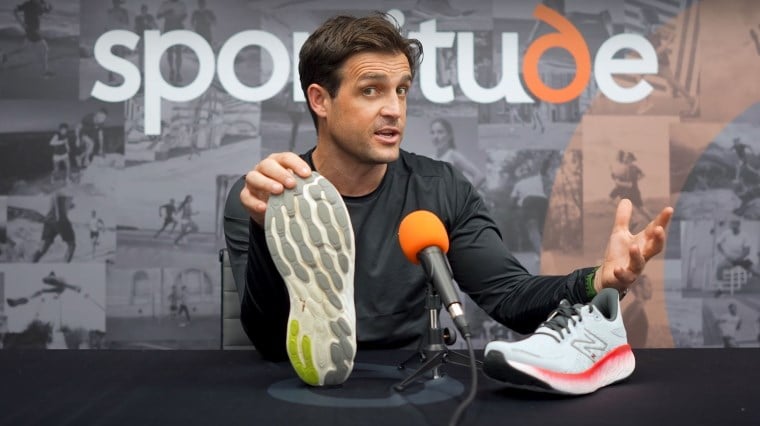
To go back to what we've discussed, there’s significant changes, however not a lot of changes with the upper in the New Balance Fresh Foam X 1080v13. The lacing coming further down and the saddle being a little bit more conformed is a great thing. There’s a little bit more padding in the heel collar which is going to provide more comfort.
In the midsole we have significant change with the 1mm higher stack height and a 6mm offset in the New Balance Fresh Foam X 1080v13 in comparison to an 8mm offset in the New Balance Fresh Foam X 1080v12. However, the running shoe itself has a more consistent, softer ride from entry, midstance and release in the New Balance 1080v13.
The biggest changes are coming from the outsole which is complementing the midsole. In the outsole we have vertical to almost diagonal flex groove setup in comparison to what we have had in last year's New Balance 1080v12, where there is the horizontal two flex grooves to the forefoot to meet that vertical lateral line.
There’s a bit more surface area in the New Balance 1080v12 and that had to be the case to provide more stability. You don't need it with the New Balance 1080v13 because the switch up with regards to the flex grooves. Your foot runs with that outsole configuration which is complementing that softer, slightly higher stack height with the Fresh Foam X cushioning system.
The Wrap Up
Thanks for tuning in to my New Balance Fresh Foam X 1080v13 versus New Balance Fresh Foam X 1080v12 comparison shoe review. I hope it's been of some value to you.
If you have questions about what I've discussed today or I haven't addressed something that you would like me to, please contact our Sportitude shoe experts.
The New Balance 1080 has a fantastic following all over the world and the changes in the New Balance 1080v13 will be a positive thing. It will play to a few more runners and I'm excited to see what New Balance are doing in this space for the next 12 months.
Please subscribe to the Sportitude YouTube channel if you haven't subscribed already to stay notified and we'll keep pumping out shoe reviews like this for you the fantastic running community all over the world.
Thank you very much for tuning in, and thank you to all of our subscribers, we love your support. Until next time happy running, stay safe and we will see you out on the road. Take care.
FEATURES
New Balance Fresh Foam X 1080v13
- Foot Type: Neutral / Mild Overpronator
- Upper: Engineered Knit
- Midsole: New Balance Fresh Foam X
- Heel Height: 33mm
- Forefoot Height: 27mm
- Offset / Drop: 6mm
- Sustainability: Recycled materials in upper
- Similar Shoes: Hoka Clifton, Asics Gel Nimbus
Men
- Weight: 262g / 9.2oz (US 10)
- Width: D (standard), 2E (wide)
Women
- Weight: 206g / 7.3oz (US 7)
- Width: B (standard), D (wide)
New Balance Fresh Foam X 1080v12
-
New Balance Fresh Foam X 1080v13 - Mens Running Shoes
-
New Balance Fresh Foam X 1080v13 - Womens Running Shoes
-
New Balance Fresh Foam X 1080v13 - Womens Running Shoes
-
New Balance Fresh Foam X 1080v13 - Womens Running Shoes
-
New Balance Fresh Foam X 1080v13 - Mens Running Shoes
-
New Balance Fresh Foam X 1080v13 TCS NYC Marathon - Mens Running Shoes
-
New Balance Fresh Foam X 1080v13 TCS NYC Marathon - Womens Running Shoes
For a more in-depth shoe fitting experience, you can book a free 15 minute video chat in a Live Fit session or make an appointment to discover your RunDNA at Sportitude Running@Hindmarsh.
Book your RunDNA assessment today!
Follow Sportitude Running at:
Instagram: sportitude.running
If you liked this, you'll love:
What Type Of Running Shoe Is Best For Me?
Running Shoe Guide 1: What To Do When Your Running Shoes Arrive
Running Shoe Guide 2: How To Break In Your New Running Shoes
Running Shoe Guide 3: How To Clean And Care For Your New Running Shoes

